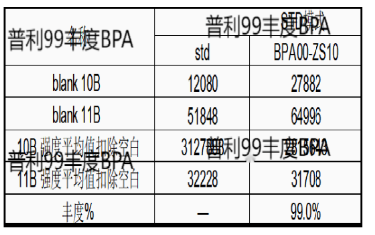
Boron Neutron Capture Therapy (BNCT), as a kind of binary targeted therapy, the biggest difference lies in the use of boron drugs that can target tumors, relying on the difference in boron drug absorption between tumors and normal tissues to achieve precise targeting and killing at the cellular level. Therefore, boron drugs play an important role in BNCT therapy, and the most critical component of boron drugs is the boron 10 isotope it carries. Natural boron contains both boron 10 and boron 11 isotopes in the ratio of 2:8, of which only boron 10 is able to capture thermal neutrons, while boron 11 does not have this effect, so the boron in boron drugs actually refers to boron 10 isotope. However, the abundance (isotope content) is rarely examined in traditional drug development, and therefore the current regulations do not specify how much boron should be present in boron drugs, such as boron 10 phalanx (BPA, the only boron drug approved for marketing), and there are fewer publicly available data on the impact of choosing boron drugs with different abundance levels. In order to provide the best quality boron drug for patients, our researchers, based on a lot of research and experiments, have determined that the development of boron drugs, such as boron 10 farnesyl, should preferably be 99% or more in abundance, which has better clinical significance.
1、 Pharmacology View
The Japanese BPA patent indicates that the B10 abundance of the API in the preparation is preferably 99% or more, and we have found that the stability of the preparation using 95% abundance of the API is worse than that using 99% abundance of the API in the stability study during the period of research and development. From the point of view of ensuring the stability of APIs and preparations, BPA APIs with 99% or more abundance are optimal.
2、 Effectiveness View
The mechanism of action of BNCT therapy determines that a certain plasma boron 10 concentration needs to be maintained during treatment to ensure that the tumor boron 10 concentration is sufficient to achieve the killing effect. BPA is transported into the tumor cells through the amino acid transporter LAT-1, which is an assisted diffusion process, and one of the characteristics of assisted diffusion is that there is a saturation cap on transport, which means that there is an upper limit on the total BPA concentration that can be uptake in the tumor. There is an upper limit. In this case, BPA with low boron 10 abundance may not be able to achieve the same intratumor boron 10 concentration as BPA with high boron 10 abundance even if the administered dose is increased, and the end result is a decrease in therapeutic efficacy. Therefore, the abundance of BPA directly affects the ability to kill tumor cells during treatment, and where available, BPA with more than 99% abundance is the best choice at present.
3、 Security View
According to relevant data, the most important adverse reaction of BPA in clinical use is renal injury. The reason for this is mainly due to the poor solubility of BPA under therapeutic conditions, and some BPA crystals precipitate out of the high dose administration during the treatment process, which on the one hand causes blockage to the renal tubules, and on the other hand, the crystals cause damage to the cells of the renal tissues. This adverse effect is particularly prominent in the case of low boron 10 abundance. When BPA is administered at low boron 10 abundance, it is necessary to increase the concentration of BPA administered in order to increase the abundance of effective boron 10 in the tumor cells. However, considering the previously described mechanism of BPA entry into the cells, this may not necessarily improve the therapeutic effect, but rather increase the risk of BPA precipitation in the urine, thus increasing the incidence of renal injury. Therefore, from a safety point of view, administration of BPA in more than 99% abundance is the best safety guarantee for patients.
BPA product development should set the standard for boron 10 abundance at 99% or more. Since the abundance of BPA has a huge impact on the stability of the product and on the effectiveness and safety of patient treatment, why not further increase the requirements on the abundance, such as 99.5% or more? This is because of the limitations of the existing technical conditions, the boron 10 isotope products that can be obtained stably on the current technology is generally the highest abundance of 99%, the domestic market has a number of suppliers can provide quality standards in line with the APIs to ensure a stable supply of boron drugs, and higher abundance requirements, although there will be a benefit but the cost and stability of the production can not be guaranteed. Therefore, the choice of 99% or more abundance of boron 10 acid as a starting material standard is the most reasonable, but also has a high feasibility.Overall, we believe that with the current technical capabilities of the industry, it is most reasonable that BPA product development should be standardized at 99% or more for boron 10 abundance.
Stable supply of self-produced boron 10 acid APIs with more than 99% abundance.Anhui Poly, a wholly owned subsidiary of Poly Pharm., has completed the large-scale production of BPA (4-10-boronic acid-L-phenylalanine) this year, and it can be supplied stably. The chemical purity of the product can reach more than 99%, and the isomer impurity is less than 0.005%. It is the domestic company with the supply of boron-10 abundance greater than 99%.
Anhui Poly Pharm. is a professional supplier of active ingredients, dedicated to providing chemically synthetic, biosynthetic and high-quality raw materials and services in fields of pharmaceutical industry, health care and skin care worldwide.
